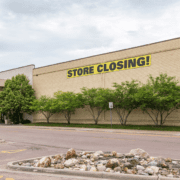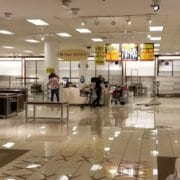Are Retail-Back CMBS Loans the Next “Big Short”?
At this point, almost everyone knows about the story of the few who gambled on the short positions of subprime residential mortgages and cashed in (if you don’t, you can read more about it here). Some investors now believe they have found the next “big short”: retail-backed CMBS loans.
The Wall Street Journal first reported in 2017 that one hedge fund management company, Alder Hill Management, was shorting America’s malls. There have also been recent reports that Alder Hill made other short investments in 2012 and 2013 era loans. Since then, Bloomberg reported that Deutsche Bank and Morgan Stanley had both recommended buying credit protection against, or shorting, segments of CMBS with heavy concentrations of retail loans. So why are real estate investors betting against a key anchor in the CMBS market?
There is a direct correlation between the rise of massive online retailers like Amazon and the suffering of brick-and-mortar retail. It is no secret that people are spending more time online. And a lot of that time is spent shopping. This activity is becoming increasingly frictionless, from paying for something by just scanning your fingerprint to practically instant delivery. As such, it is hard to argue that the idea of shopping in person provides the consumer with enough benefits to get them off the couch.
The fate of the CMBS market is extensively intertwined with retail. According to this Trepp report, retail loans alone accounted for over 26% of the $61.1 billion CMBS debt ready to mature over a 6-month period in 2017. To make matters even worse, retail has surpassed energy as the most distressed and at risk of bankruptcy sector in the economy. Retail bankruptcies are spiking at the highest levels since what was seen during the 2008-2009 financial crisis.
These recent bets against CMBS are similar to trades made by Michael Burry and Steve Eisman before the housing market collapsed in 2008 (made famous by the movie “The Big Short”). So how exactly does shorting work? Investors shorting the sector buy credit protection, a position where they pay monthly premiums to the seller and are paid in return for CMBS losses that occur as tenants fall behind on loan payments. But these positions are expensive to maintain, so when a trend like this begins to appear, experts consider it a sign of impending weakness in a specific market.
While investors are looking to capitalize on failing retail centers, retailers and mall landlords are not going down without a fight. Some well-located malls, specifically those that cater to a more-affluent shopper, are still seeing tenant demand and rent growth. showed that mall rents grew 0.3% in the second quarter, despite rising vacancies. Additionally, if malls prove that they can stay afloat, online-only retailers may begin to search for brick-and-mortar retail space as well. E-tailers are recognizing that having an in-person retail presence can reinforce their online efforts, as well as potentially appeal to a broader market. Online-only companies like Warby Parker, Tommy John, Indochino, Fabletics, Bonobos, Birchbox, and even Amazon are now opening brick-and-mortar locations across the country. The goals of these retail locations go beyond simply sales. People want to touch and feel before they buy, but after they buy an item once in person, they can repurchase later online. In fact, the clearest example of this is one of the biggest tech companies in the world: Apple. In the grand scheme of things, Apple Stores sells relatively few products. But their stores are well-stocked with Apple devices and meticulously curated third-party accessories. The focus of these locations is giving customers the chance to play with and learn about their gadgets.
There is no denying that today is a tough market for retailers. It is not a great sign that investors have moved from betting against retailer stock to betting against CMBS supported by retail. While investors try to take advantage of this doomsday prediction, retailers and mall landlords are attempting to change and evolve. They hope that their efforts will stave off these profiteers in the short-term and put them on a path to sustainable success in the long-term.
To learn more, check out our blog post: The Pop-Up Shop Solution to the Retail Apocalypse!











